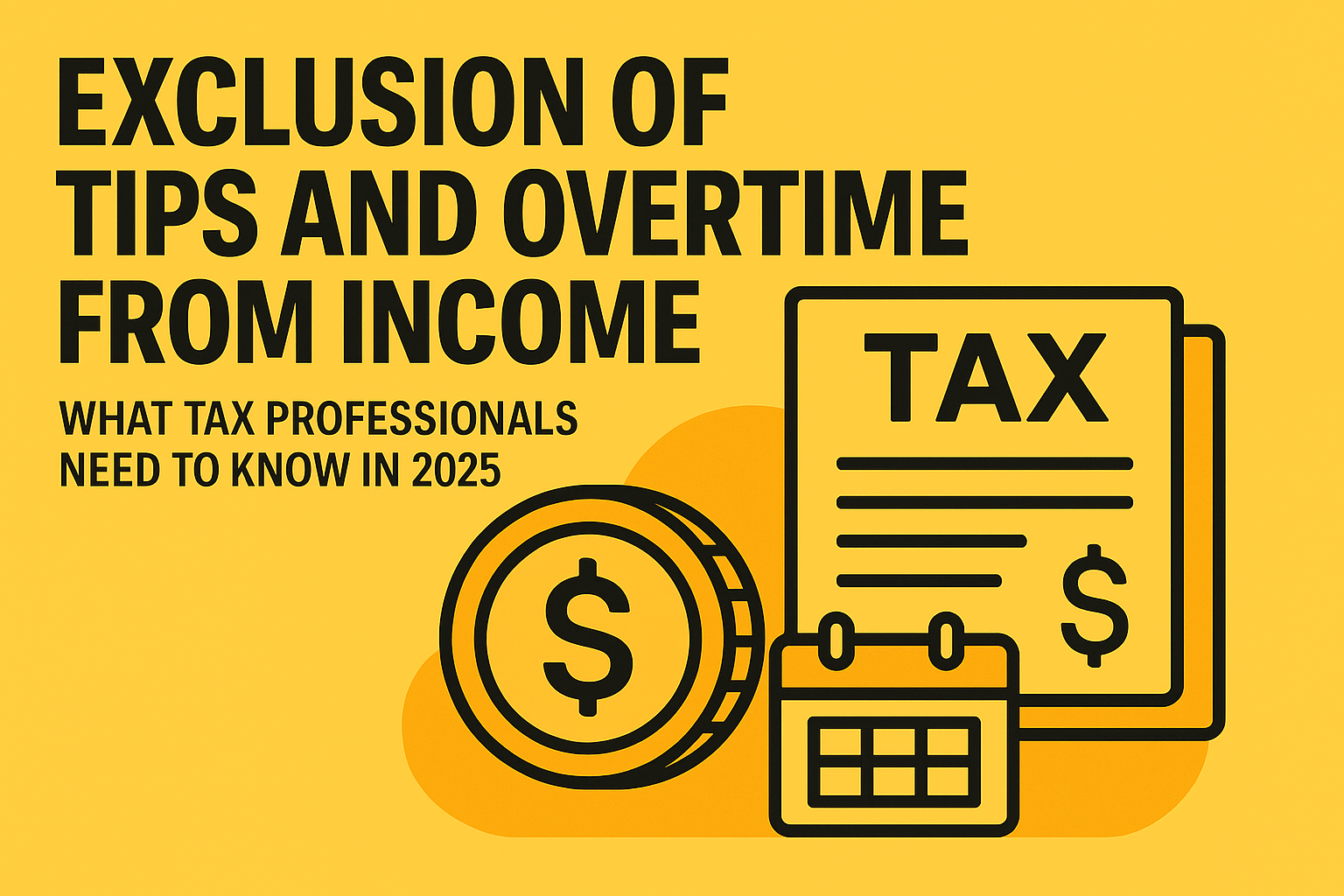Recent legislative proposals are stirring conversations around excluding tips and overtime pay from taxable income. This potential change could dramatically alter tax planning strategies for millions of workers. In this post, we explore the implications for tax professionals and how AI tax tools, AI tax research, and agentic AI in tax planning can help you stay ahead. Learn how to navigate these changes with confidence—empowered by AI-driven insights.
Understanding the Movement to Exclude Tips and Overtime Pay from Income
In 2025, renewed interest from lawmakers has brought forward several proposals to exclude tips and overtime compensation from federal taxable income. Proponents argue that such exclusions would benefit low- to middle-income earners, simplify payroll tax administration, and address cost-of-living concerns. As of mid-2025, this initiative remains a legislative proposal, but the momentum is gaining.
Key Bills to Watch:
- The No Tax on Tips Act of 2025 (introduced in the House) would exempt reported tip income from federal income taxes.
- Overtime Pay Fairness Amendment proposes partial or full exclusion of overtime earnings from taxable wages.
While these bills are not yet law, tax professionals must prepare now. If enacted, these exclusions will directly affect wage reporting, payroll taxes, and tax planning for both individuals and businesses.
Implications for Tax Professionals and Planners
1. Changes in Taxable Wages
If enacted, these changes would reduce reported taxable wages for millions of workers in service, hospitality, and labor-intensive industries. This may lower:
- Federal income tax liabilities
- Earned Income Tax Credit (EITC) thresholds
- Contributions to Social Security and Medicare (depending on legislation scope)
2. Impact on Withholding and Tax Filing
Payroll software and tax withholding tables would need updates. Clients may be over-withholding if exclusions are not immediately reflected. Proactive advisors will need to update paycheck analyses and tax projections accordingly.
3. AI Tax Planning Tools Make the Difference
AI-powered tools such as Hive Tax AI Planning Assistant allow professionals to quickly simulate how these changes will affect a client’s year-end liability. With agentic AI in tax, your workflow adapts dynamically—scanning recent IRS guidance, proposed legislation, and economic impact studies to provide actionable, personalized plans.
How AI Tax Tools Can Help You Navigate the Change
✅ AI Tax Research Tools
Ask nuanced questions like, “How will the exclusion of tips affect EITC eligibility?” and get cited answers from IRC, IRS publications, and real-time legislative databases.
✅ AI Tax Planning Assistant
Model alternate scenarios—e.g., tips included vs. excluded from AGI—and evaluate outcomes across retirement contributions, ACA subsidy thresholds, and AMT exposure.
Final Thoughts
The potential exclusion of tips and overtime from taxable income represents one of the most impactful tax shifts in recent years. While the specifics are still under debate, forward-thinking professionals will prepare by leveraging AI tax research tools, AI tax planning assistants, and agentic AI in tax to stay ahead.
Try our AI tax planning tool today or book a free demo and see how you can serve your clients with confidence, accuracy, and speed.

